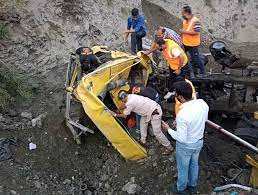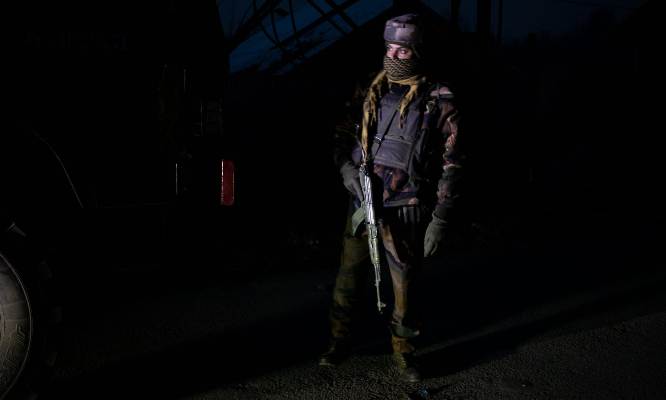Kashmir Heatwave 2025: Srinagar Hits 37.4°C, Breaking 70-Year July Record
By: Javid Amin | Srinagar | 05 July 2025
The Day Kashmir Burned
For a city famously known for its shivering winters, snow-capped peaks, and chilled breeze from Dal Lake, Srinagar’s 37.4°C on Saturday has sent shockwaves across the Valley. According to the India Meteorological Department (IMD), this is the second-highest July temperature ever recorded in the summer capital since 1892.
The blistering heat, hotter even than Jammu on the same day (35.0°C), has stirred public anxiety, scientific concern, and widespread discomfort. And it’s not an isolated spike—it’s part of a growing pattern of climate extremes battering Kashmir.
Record-Breaking July: A Look at the Numbers
The temperature rise wasn’t merely symbolic—it shattered a 72-year-old record:
-
37.4°C on July 5, 2025 — Second hottest July temperature ever recorded.
-
Previous July record: 37.8°C in 1953
-
All-time record: 38.3°C in 1946
Kashmir, historically considered a climatic buffer zone, is now experiencing weather once reserved for India’s northern plains.
Srinagar has crossed the 35°C threshold six times this summer, compared to only once or twice in earlier decades.
Not Just Srinagar: A Region Sweltering
Pahalgam at 31.2°C: Trouble in the Hills
Even Kashmir’s prized hill resort Pahalgam wasn’t spared. It recorded 31.2°C, a temperature that’s considered abnormally high for its elevation. Environmentalists worry this could:
-
Stress alpine vegetation
-
Impact cold-water fish species
-
Disrupt tourism patterns
Kupwara at 36.5°C: A District in Distress
Kupwara’s 36.5°C turned remote farmlands into sun-baked fields. With no effective irrigation and unreliable power for fans or coolers, daily life has become unbearable for many.
Jammu Cooler than Srinagar
For the first time in years, Srinagar surpassed Jammu’s daily high, a telling sign of climatic anomaly in altitude-dependent regions.
The Human Toll: Heat Exhaustion and Hydration Crises
Hospitals across Srinagar, Kupwara, and Anantnag reported:
-
A 40% rise in dehydration-related ER visits
-
Increased cases of fainting among schoolchildren and the elderly
-
Heat-induced headaches, dizziness, and nausea reported even among healthy adults
Doctors are advising extreme caution during peak heat hours (12 PM to 4 PM), especially for:
-
Children under 12
-
Pregnant women
-
Outdoor laborers and delivery personnel
Expert Opinion: “This is the New Normal”
Dr. Tariq Maqbool, Climatologist, Kashmir University:
“This isn’t just a blip—this is climate change, unfolding in real time. The western Himalayas are no longer insulated from heatwaves.”
Dr. Farhat Zubair, IMD Srinagar:
“We’re seeing earlier and longer heat spells, coupled with erratic rainfall and declining snowfall. Our traditional seasonal models are collapsing.”
Climate Change in Kashmir: The Big Picture
Shrinking Snowfall, Rising Heat
-
20% decline in winter snowfall in the last two decades
-
Summers now start earlier and stay hotter for longer
-
Average summer highs in Srinagar have increased by 1.5–2°C since 1980
Himalayan Meltdown
Glaciers feeding the Jhelum and Lidder rivers are receding. Glacial melt now peaks earlier in the year, reducing water availability in late summer and affecting both agriculture and hydropower.
Urban Heat Island Effect
Rapid urbanization in Srinagar, with more concrete and fewer trees, has created urban heat islands where localized temperatures are significantly higher than nearby rural zones.
Heatwave Impact on Schools, Students, and Education
Children Bear the Brunt
Overcrowded classrooms, tin-roofed school buildings, and poor ventilation make the heatwave a public health threat for schoolchildren.
Students in Budgam and Baramulla have fainted during school hours. Many carry no water, and there’s limited access to rehydration solutions.
Administrative Response
The Directorate of School Education announced:
-
15-day summer break from June 23 to July 7
-
Recommendations to adjust school timings to mornings only
-
Orders to ensure ORS (oral rehydration salts), fans, and shade in every school
Water Scarcity and Electricity Woes
Irrigation Crisis
Canals have dried up in south Kashmir, affecting:
-
Paddy cultivation
-
Horticulture yield
-
Aquatic ecosystems (native fish now face extinction, see full article here)
Farmers say they’ve lost over 30% of their crop yield this summer due to erratic irrigation schedules.
Power Cuts Add to Misery
With soaring demand for fans, coolers, and AC units (where available), Kashmir’s fragile grid is under stress:
-
Load shedding continues even in Srinagar suburbs
-
Short-circuit incidents have increased
-
In some districts, transformers blew out due to excessive load
A Threat to Tourism and Culture
Kashmir’s image as a “cool summer escape” is now in question:
-
Tourist footfall in high-altitude resorts has declined
-
Traditional activities like shikara rides and Mughal garden walks are becoming uncomfortably hot
-
Locals report early wilting of garden flowers and saffron blooms, threatening livelihoods
Environmentalists and NGOs Call for Resilience
Youth-led and environmental organizations are urging:
-
Green infrastructure policies: heat-reflective rooftops, urban tree belts, rooftop rainwater harvesting
-
School-based awareness drives on climate adaptation
-
Water conservation campaigns in rural and urban neighborhoods
What Authorities Are Doing
Government Measures So Far
-
IMD has issued heatwave advisories until July 8
-
Department of Health has dispatched hydration kiosks in hotspots
-
Disaster Management has urged early warning systems for flash floods and landslides during sudden rain
Gaps That Remain
-
No statewide Heat Action Plan tailored to Kashmir’s geography
-
No legislation on urban heat management or climate-adapted building codes
-
Lack of long-term groundwater and water body protection strategy
What Needs to Be Done: 10 Urgent Recommendations
-
Create a Kashmir Heat Action Plan (KHAP) with localized interventions
-
Mandate green rooftops and tree belts in city planning
-
Introduce climate-resilient crop varieties and irrigation subsidies
-
Invest in glacier monitoring stations across the Valley
-
Ban concrete expansion in ecologically fragile zones
-
Install solar-powered fans and drinking water kiosks in schools and markets
-
Digitally map heat islands using satellite data for intervention
-
Subsidize insulation retrofits for tin-roofed homes and buildings
-
Promote “Cool Kashmir” campaigns for public awareness
-
Collaborate with NGOs, universities, and global climate funds for funding adaptation
Voices from the Valley
Nazir Ahmad, schoolteacher in Budgam:
“We had three students faint last week. The heat is unbearable, and we have only two fans for a room of 40.”
Dr. Zoya Nabi, pediatrician in Anantnag:
“We are seeing more cases of dehydration among children than ever before. It’s no longer safe to send them to school without proper safeguards.”
Aasif Rather, environmental volunteer:
“Our shikaras now sit under umbrellas. Dal Lake is shrinking and stinking. Kashmir needs to wake up before it’s too late.”
Bottom-Line: Kashmir’s Wake-Up Call
Srinagar’s 37.4°C heat is not just a record—it’s a warning. A region once romanticized for its cool air and alpine charm is now on the frontlines of global warming. From cultural disruptions to public health emergencies, the impact of the heatwave is unfolding in every sector.
If Kashmir is to survive—and thrive—climate adaptation must become central to its governance, economy, and education. There’s no time to lose.
Let this heatwave be the tipping point that leads to serious, science-backed, and inclusive climate action in the Valley.



